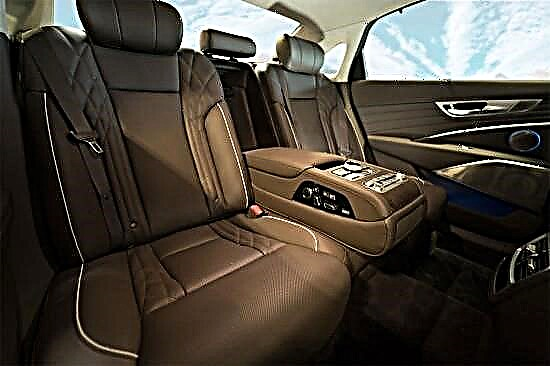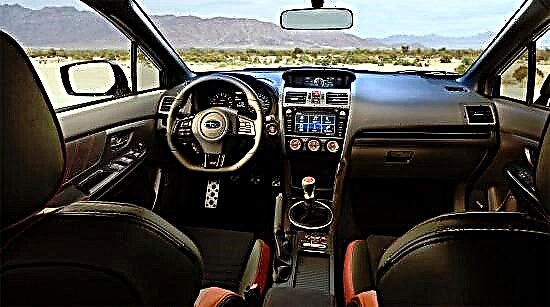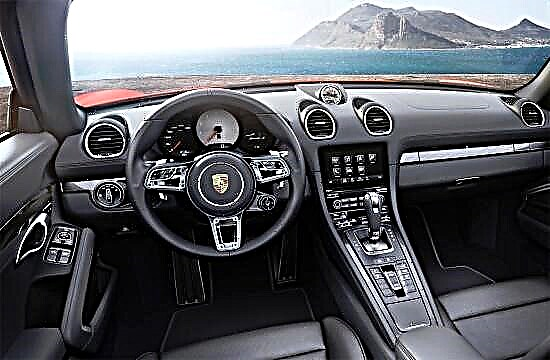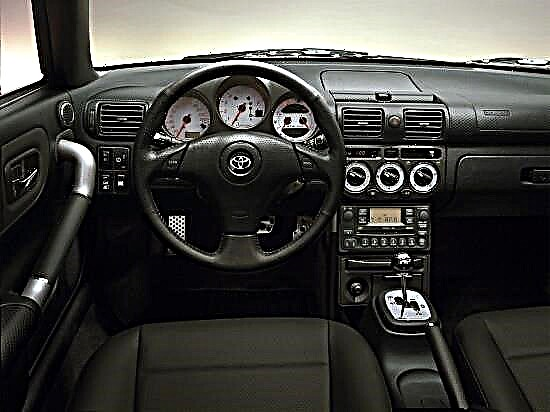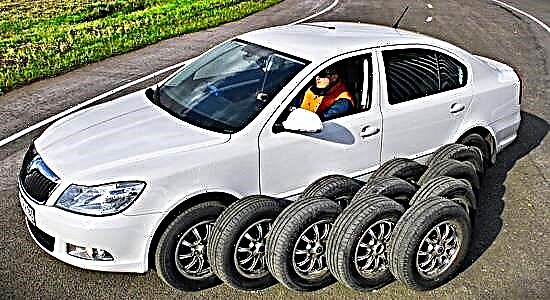Summer tires with a diameter of fifteen inches for compact cars are the most widespread on the market, because it is “shoes” of this size that are most often installed on inexpensive cars in Russia (both B-class and higher segment “C”). Well, the main reason for choosing "fifteen-inch tires" is not so much in their "budget" as in comfort and durability when operating on Russian roads (which in most cases still do not differ in quality). In addition, the "high profile" has a positive effect on the durability of the "consumables" of the chassis (shock absorbers, silent blocks, ball bearings), protecting them from increased shock loads.
Unfortunately, tire makers do not often indulge car enthusiasts with novelties in "budget dimensions" - this is understandable, because "individual" developments and the use of "latest technologies" for such tires are not justified from an economic point of view ... Therefore, it is the affordable small-sized models that are produced for the longest time than large (although periodically some manufacturers update their "budget products" in terms of the composition of the mixture and other materials - but this, first of all, is done to reduce production costs, well, and, usually, somewhat improves the characteristics of the tires themselves).
Be that as it may, let's try to find out - which of the "fifteen-inch tires" is better to choose by the summer of 2017? To answer this question, we tested dozens of 195/65 R15 summer tires, ranging from top-end to downright budget options.
The upper "price bar" is set by the "middle-aged" tires Continental ContiPremiumContact 5 of Czech "origin" and Goodyear EfficientGrip Performance "originally" from Germany - which are estimated at 3600 and 3400 rubles, respectively. A little cheaper are Pirelli Cinturato P1 Verde (3150 rubles), which are produced in Turkey, as well as a fairly "fresh" model Nokian Hakka Green 2 (3200 rubles) with a Russian "residence permit" (having an increased load index - 95).
True Japanese tires Toyo Proxes CF2 and developed in South Korea, but produced in Hungary by Hankook Kinergy Eco, are at the top of the middle price segment - both are offered for 2800 rubles. Slightly less (2700 rubles) ask for "fresh" tires Nordman SX 2 domestic production and made in the Middle Kingdom Kumho Ecowing (2600 rubles).
Far from being a new domestic rubber Cordiant Sport 3, it is located clearly on the border of the budget and mid-price offer - 2500 rubles. The "fresh" tires Matador Elite 3 (2300 rubles), also known as MP 44, produced in Russia, will be cheaper.
Well, the most accessible test participants were the Chinese “shoes” GT Radial Champiro FE1 and Belarusian tires Belshina Artmotion (also known as Bel-261): the former are available at a price of 2,200 rubles, and the latter - 2,100 rubles.
For testing twelve sets of tires, a popular golf-class car was chosen, and they were carried out at one of the southern Russian proving grounds at a time when the outside air temperature ranged from 22 to 37 degrees Celsius.

Tire testing proceeded according to the already worked out scheme, and the initial exercise was the assessment of fuel efficiency. But for more correctness of the results, it was preceded by warming up the tires and components and assemblies of the car itself - for this purpose, a distance of about ten kilometers on the high-speed ring was covered on each of the presented sets. Well, so that these races do not go to waste, during them exchange rate stability at speeds up to 130 km / h, cabin noise and ride smoothness were assessed.
Best in plan directional stability Nokian and Pirelli tires became - the car “dressed” in them distinguished itself not only with clear reactions, but also with an understandable, informative steering wheel. Cordiant, Belshina, Matador and GT Radial proved to be the worst of the rest - these four distinguished themselves by a wide “zero”, low information content of control, delays in the reactions of the car, as well as solid steering angles when adjusting the course.
Measurements fuel efficiency were carried out on a flat two-kilometer stretch of road in calm weather. But even under such conditions, the races in each direction were repeated several times in order to exclude the influence on the final results of absolutely all factors. GT Radial and Matador turned out to be the least "voracious" here - they immediately outstripped their closest pursuers by 0.2 liters per 100 km at 60 and 90 km / h. In turn, the Cordiant tires gave the worst performance: at "city" speeds they lost 0.3 liters to the leaders, and at "suburban" - 0.5 liters.
After these exercises for comfort ratings a four-kilometer loop was overcome along the service areas of the landfill, characterized by various irregularities - from cracks and seams on the asphalt to serious potholes. Moreover, each of the sets of tires was tested along a strictly defined route at the same speed.
Belshina, Toyo and Kumho are louder than others, but they also showed quite a good result. In addition, GT Radial tires were noted for "aircraft hum" when driving on rough asphalt.
Hankook was put on the shoulder blades in smooth running - the car distinguished itself with the softest overcoming of road irregularities on them. The rest of the tires showed themselves a little worse, with the exception of the GT Radial - it was they who became outsiders in this discipline, transmitting vibrations to the controls and seats from the asphalt, and even missing all the shocks from any irregularities.
In addition to the main exercises, all sets of tires underwent an additional test, which was not included in the overall standings - this is a start and movement uphill with a slope of 12% on a dirt surface. The Cordiant and Matador are most confident on this road, while the GT Radial, Pirelli, Hankook, Toyo and Kumho are constantly skidding, losing traction.
The next test cycle was purely asphalt, where the tires had to “rub against the hard surface”. And the first exercise is braking on wet asphaltbecause here the tread wears out to a minimum. At the same time, the area where the measurements were carried out was thoroughly cleaned of small stones and dust before each race. In addition, one nuance is worth noting here: when the car was moving at a speed of 83-85 km / h and was at a distance of several bodies from the starting point of braking, its wheels were wetted using a mobile spray bottle. The braking distance was measured when the speed was reduced from 80 to 5 km / h, and not to the maximum stop, in order to eradicate interference in the ABS process.
On wet surfaces, the Nokian tires showed the leading results, on which the car needed only 26.2 meters to slow down. On Goodyear, Continental and Pirelli tires, he rolled farther by only 0.5 meters, and on Belshina - he even went 31 meters (the difference with the "gold medalist" is more than the body of the car).
Dry braking, also previously cleared of all kinds of debris, was carried out at a speed of 103-105 km / h, but the measurement was carried out when the speed was reduced from 100 to 5 km / h. In this case, Pirelli took the lead with 37.5 meters, while the Nokian, Continental and Goodyear tires lost 1, 0.4 and 0.3 meters, respectively. The outsiders are again Belshina, where the car slowed down as much as 42.9 meters.
The final exercise was “rearrangements on wet and dry surfaces"- such a maneuver is the most difficult for drivers. Well, they were carried out at the very end for the reason that the rubber here is erased like emery. The rearrangement itself is a lane change in which sharp maneuvering is simulated. And such an exercise is very relevant, because it often has to be used on a regular road when avoiding obstacles that suddenly appear in front of the car. It serves to assess the complex of transverse grip and drift characteristics of tires, as well as the clarity of the car's reactions.
The tester's task during the rearrangement was to determine the maximum possible speed of its implementation. At the same time, the car in this case should not have left the traffic lane bounded by the cones.On wet asphalt, a car “shod” in Goodyear tires drove faster than others when changing lanes - 69 km / h. Pirelli and Continental lost only 0.5 km / h to the leaders, but Belshina and GT Radial were the most "unhurried" - 61 km / h and 61.5 km / h, respectively.
Nokian, Pirelli, Nordman and Toyo got the maximum points for handling on wet surfaces during the rearrangement - in them the car "sported" understandable behavior and clear reactions. But for GT Radial tires, things with extreme maneuvering frankly did not work out - they unexpectedly carried the car into a skid, and then very reluctantly restored the trajectory.
On dry asphalt, Nokian tires were the winner, allowing the car to reach 69.7 km / h. "Silver" went to Continental (69.1 km / h), while Belshina again trudged in the rearguard (65.9 km / h).
The "extreme" handling on dry roads was best done by the same tires as in the similar discipline on wet surfaces, although Hankook also joined them. Another thing is interesting - the GT Radial tires here behaved very predictably, only slightly yielding to the leaders. But the outsiders are Belshina and Matador.
What is the bottom line? After all the tests, the first and second places were shared between the Nokian Hakka Green 2 and Pirelli Cinturato P1 Verde tires - which are practically devoid of negative aspects. But the third and fourth positions went to Continental ContiPremiumContact 5 and Goodyear EfficientGrip Performance - as a result, four sets of tires were on the “conditional podium”. By the way, there is not much to blame for the "second" ones either - all their shortcomings boil down to small quibbles of the testers.
The final rating of summer tires according to the test results of 2017:
1-2. Nokian Hakka Green 2;
1-2. Pirelli Cinturato P1 Verde;
3-4. Continental ContiPremiumContact 5;
3-4. Goodyear EfficientGrip Performance;
5. Hankook Kinergy Eco;
6. Nordman SX 2;
7. Toyo Proxes CF2;
8. Kumho Ecowing ES01 KH27;
9-10. Cordiant Sport 3;
9-10. Matador Elite 3 (MP 44);
11. GT Radial Champiro FE1;
12. Belshina Artmotion (Bel-261).
Hankook Kinergy Eco and Nordman SX 2 became "good" shoes. The first "shoe" turned out to be the most comfortable, and the second was distinguished by precise controllability during extreme maneuvers. In addition, they deserve praise for their affordable cost with a good bottom line.
The seventh line of the rating was occupied by Toyo Proxes CF2, and the eighth - by Kumho Ecowing ES01. Both those and others showed an insufficient level of comfort - this is their main drawback.
The ninth and tenth places were shared by Cordiant Sport 3 and Matador Elite 3 - they can be classified as "satisfactory". They showed inadequate grip and difficult handling when shifting. But if you do not come to fanaticism, then these tires - "quite a decent choice." And from the point of view of economy, Matador are even more attractive - they are cheaper, and even contribute to fuel economy.
Chinese tires GT Radial Champiro FE1 can also be classified as "satisfactory" - they save good fuel and are offered at an affordable price. But they also have enough drawbacks - noise, harshness, low predictability when maneuvering on wet asphalt.
But the Belshina Artmotion tires, despite the most attractive price tag, closed the “table of ranks”. Although it is worth making a reservation here: despite a whole "bouquet" of shortcomings, the Belarusian "rubber" was ahead of all in terms of cost and quality. And here we can only say one thing: "they are not so much worse than competitors, as much as they are more affordable."




